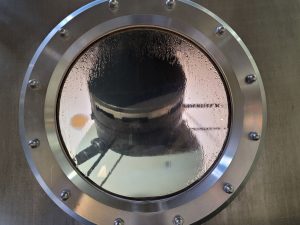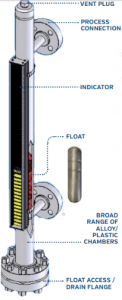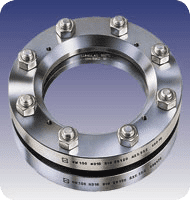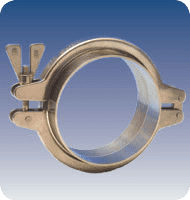What is a sight flow indicator?
A sight flow indicator provides a window into a process pipeline that allows operators a visual means of verifying liquid flow and flow direction. Simple and low-cost, it also allows operators to observe the color, clarity, consistency, viscosity and other characteristics of process fluids.
The basic description of a sight flow indicator is a glass column or two opposing windows with a means to mount the device to a pipeline. Bodies or heads in a tubular style are usually constructed out of a specific metal. Windows are made from special glass discs in a gasketed assembly, glass windows fused in a metal frame, or tubular glass. Occasionally polymer windows are used.

There are two main styles of sight flow indicators. The first has two opposing windows, one for viewing and the other to allow light to illuminate the intervening flow. A second style is a glass tube that allows 360-degree observation.
Often sight flow indicators are fitted with components that are visually moved by the flow, making it easy for the operator to see at a glance the direction of flow and the process fluid properties. (There are many types of indicators, suitable for different applications. See our blog post on How Does a Slight Flow Indicator Work.)
Sight flow indicators attach to pipeline fittings via flanged, threaded, weld-type or sanitary clamp connections. They are available to fit standard pipe sizes ranging from ¼-inch to 12-inches and some carry ANSI pressure & temperature ratings.
There are no electronics for flow measurement and control. Sight flow indicators may seem out of place in our highly automated and connected plants, but sometimes there is no substitute for visual inspection—for the operator to examine the process fluid and to simply see what is happening inside a pipeline.
Also, as a simple, failure-proof device, a sight flow indicator offers low-cost redundancy. A sight flow indicator cannot give a false reading, lose power, or fail to read.
Applications for Sight Flow Indicators
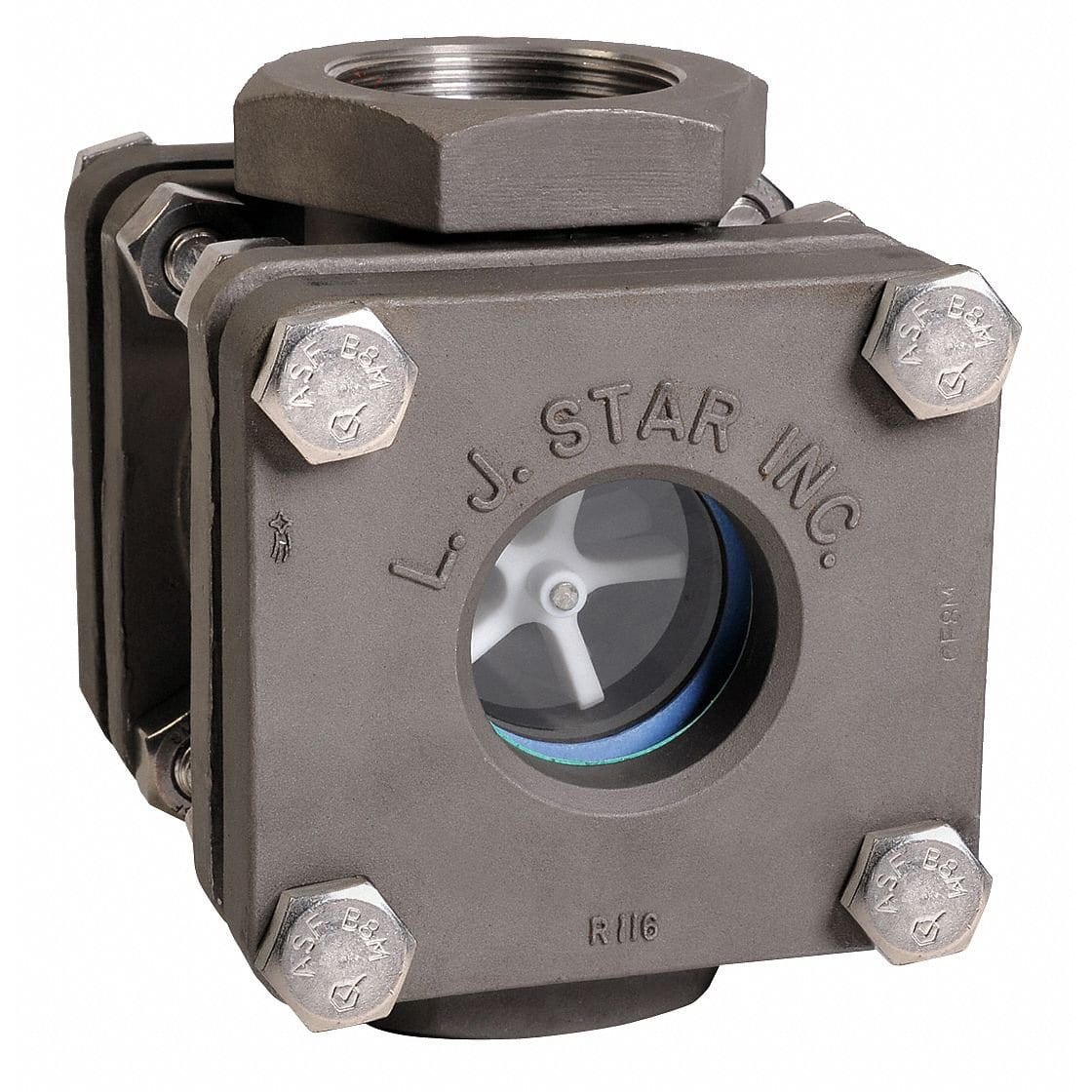
To understand what a sight flow indicator is, it helps to know the many ways they are applied in industries. Sight flow indicators are used to observe flows of process media including
- Liquid – process liquids, drugs in suspension, pharmaceutical reactions, chemicals, biofuels, liquid foodstuffs, petroleum products. Sight flow indicators enable operators to inspect pipelines for scale build-up, and residue, foreign matter, especially during cleaning routines.
- Gas – steam, nitrogen used in food packaging, gases used in chemical and semiconductor processing, petroleum gases.
- Powder – plastic resins, powdered foodstuffs, inorganic powders, bulk dry chemicals. Operators use sight flow indicators to confirm the free flow of materials and to view the blending of materials.
Through the window of the sight flow indicator, an operator can observe the direction of flow, the approximate rate of flow, and fluid characteristics of the process media, without interrupting the flow of the process. There are many applications.
- Steam pipelines. Many processes require heat, and piped steam has been a traditional and economical means of transferring heat to points in a process. Steam pipelines are notorious for collecting mineral residue and rust, which can be identified through a sight flow indicator and then addressed. Condensate is another concern with steam; a sight flow indicator is a simple and reliable means of identifying when condensate is present. By the way, steam-heated jackets are available that keep a sight flow indicator at ideal process temperature, for applications in which the device could provide an unacceptable cool spot in the process pipeline.
- Chemical processing. Chemical production plants typically include pipelines used to move liquid and gas products through filters, cooling lines, pumping lines, and transfer lines. Sight flow indicators enable operators to observe line conditions for blinding filters or clogs. For example, an electronic flow instrument my alert the operator to a specific decrease inflow, but it won’t explain why it’s happening. By checking sight flow indicators, the operator can inspect for solids, foam, and other contaminants, as well as confirm the instrument readings and see where in the process a problem is located or if maintenance is required.
- Phrmaceutical processing. Sterile design sight flow indicators help pharmaceutical process operators keep an eye on processes. Many drugs are created through fermentation, and therefore color or presence of foam is of great interest. Indicators must be designed for sterile service, meaning that they are crevice-free and tolerant of clean-in-place and sterilize-in-place procedures. Sight flow indicators are used by operators to visually confirm that cleaning has taken place and no residual cleaning solution remains—a step required by FDA standards.
- Food processing. Sight flow indicators are used in brewery applications to observe beer and trub as it passes to its next stage in the brewing process. Glass indicators have the advantage of both indicating flow and offering the operator a view of color and other characteristics important for quality inspection. Beyond beer, many foods are made from dry bulk powders conveyed through process lines, including flours, dehydrated food powders, and food additives. Often the sight flow indicators in these applications are made of plastic. Clear gases, such as nitrogen used in food packaging, can be observed in a sight flow indicator if it is fitted with a flow indication component.
- Lubrication. In discrete manufacturing, machines need lubrication for their smooth operation. Sight flow indicators are used on equipment so that maintenance personnel can detect the absence of oil and to inspect the color of the oil which may indicate it needs to be changed.
- Petroleum Processing. Sight flow indicators allow petroleum plant operators the ability to confirm flow through the pipeline and inspect process media for particulates. In sulfur processing, for example, operators can look at sight flow indicators to ensure the sulfur is flowing smoothly through the pipeline. The sulfur needs a constant temperature to flow smoothly, so a sight flow indicator is an indirect means of observing the temperature and avoiding disruptions.
How to Choose the Right Sight Flow Indicator
